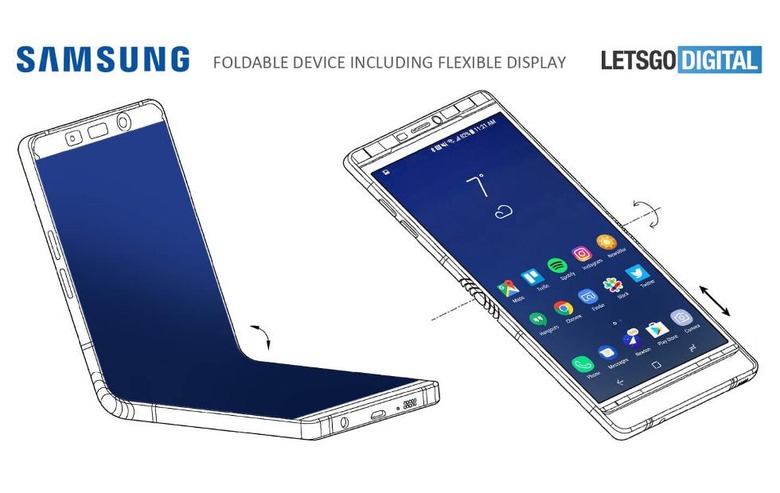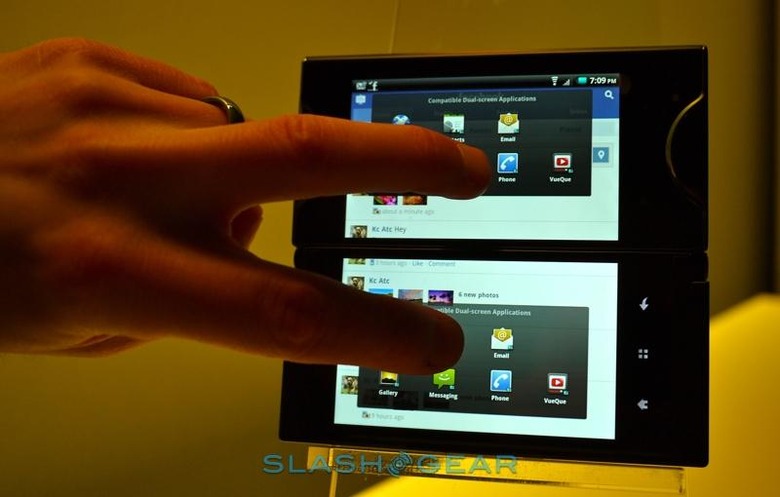The arrival of foldable phones are inevitable. The question now is less of when but in what form. There might be some that would look like the hip grandchilren of flip phones. Arguably, the more interesting ones will be the phones that fold into a tablet and back again. There is still some doubt as to whether that will just be a passing fad, just like notches or phablets. Foldable tablet-phones might actually be the only way forward given today's smartphone usage trend. And Samsung might very well be the only one in that position to blaze a trail and prove what that future holds.
Phones that turn into tablets and tablets that turn into phones are definitely the stuff of science fiction. After all, what could be more futuristic than doing something that present technology can't. But present technology is about to catch up with fiction and we have to ask if there's more to that capability than just fiction. In fact, there is because our phones' screens can no longer keep up with our growing appetites for content.
The bezel-less phone design has made it possible to have larger screens without bumping up the phone's physical size too much. You can't, however, defy the laws of physics and geometry and you can only go so far before the phone becomes the equivalent of a 7-inch tablet. Users, however, are starting to expect to see more and more content on their mobile devices but, at the same time, would rather squint than carry around a 10 or even 8-inch tablet in addition to their 6-inch phone.

A foldable phone would give users the best of both worlds but only in on specific form, one where the phone folds on its side like a book. That is why the other kind of foldable phone almost makes no sense. You'd only have a taller or longer screen but the only thing that would benefit from those are social networks and web pages that have narrow widths and lots of text.
But it's one thing to have a foldable phone, which is an achievement in itself (presuming the screen folds too). The software and user experience should adapt to that form factor. As the ZTE Axon M and Kyocera Echo proved, that's easier said than done. The latest rumor says that Samsung and Google are working together on a special version of Android exactly for that purpose. That's a bit of a surprise that Google would be involved this early if at all. Just as much that it's a surprise that Samsung isn't going on its own path. But even without the Google factor, Samsung has proven it could strike out on its own and this is one case again where that could prove to be quite beneficial.

Samsung has been heavily criticized for its TouchWiz Android experience and not without good reason. Prior to its "Samsung Experience" redesign, the company's signature UI was bloated, littered with battery-draining background processes, and slow. But it was through TouchWiz, particularly on the Galaxy Note line, that users could experience things like split screen apps and floating windows way before any other Android maker or even Google or Apple. Samsung didn't shy away from breaking the rules if it meant taking advantage of a new phablet form factor or new stylus input method. Hopefully it won't shy away from a proper foldable phone experience either.
While such a device and experience definitely sound great, the one thing that won't be so great is the price. You can expect such a device, no matter which way it folds or how it behaves, will cost a fortune. The foldable screen alone is going to be expensive, never mind the R&D costs that will be charged to consumers. But if the past two years have been any indication, consumers are willing to pay such a fortune for the latest and greatest. And what could be greater than a phone that's also a tablet and, potentially, also a desktop.
